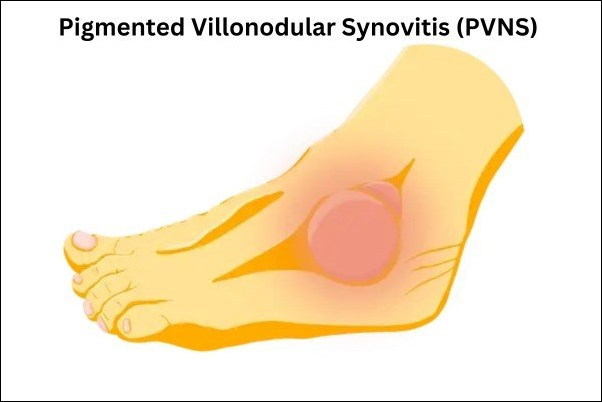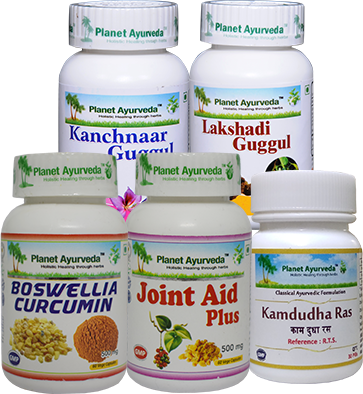Cervicitis Causes, Symptoms and Herbal Treatment
Abstract
Cervical swelling is very common and almost all multiparous women will have varying degrees of cervical swelling. The term “cervicitis” refers to an infection of the cervix, including the gland and stroma. Diseases can be acute or chronic. It is caused by many diseases such as gonorrhoea, chlamydia, genital herpes, ureaplasma, trichomonas and mycoplasma transmitted during sexual intercourse. Endocervical infection usually occurs after delivery, abortion, or hysterectomy. These bacteria enter the endocervical glands and cause drastic changes. These lesions may be localised or spread to the abdominal cavity or parametrial side. This article will discuss the introduction, causes, types, symptoms, diagnosis, complications, and treatment of cervicitis based on an overview of allopathic and Ayurvedic herbal remedies.
Introduction
In simple language, Cervicitis is the inflammation of the cervix. Inflammation usually occurs in the columnar epithelium of the endocervical glands but may affect the squamous epithelium outside the uterus. Most are caused by an infectious disease, usually sexually transmitted. In most cases, it does not cause obvious symptoms, and the importance of detection and treatment is that silent diseases can have serious consequences for pregnant women, such as salpingitis, endometritis, and pelvic inflammatory disease (PID).
Bacteria Causes Cervicitis
When Staphylococcus or Streptococcus bacterias come in contact with the uterus then Cervicitis occurs.
Types of Cervicitis
There are two types of cervicitis:
Acute Cervicitis
It is caused by an infection, it is called acute cervicitis. Among the many bacteria associated with cervicitis are Escherichia coli, streptococci, chlamydia, and gonococcus. In this cervix is tender to touch and vaginal examination is very painful.
Chronic Cervicitis
It is not infectious, caused by irritation such as allergens or by gynaecological procedures. Clinical features include pain in the lower back and excessive mucus discharge. It is persistent and recurrent.
Causes
- Diseases such as gonorrhoea, chlamydia, genital herpes, ureaplasma, trichomoniasis and mycoplasma are sexually transmitted.
- Physical and chemical stimuli such as tampons, IUDs or pessaries.
- Allergy to certain chemicals such as douche, spermicide, or latex condoms.
- The infected area may be swollen, red, pus and mucus.
- Hormonal imbalance
- Bacterial overgrowth
- Radiation therapy
Symptoms of Cervicitis
There are the following symptoms related to cervicitis.
- Fever
- Abdominal or pelvic pain
- Unpleasant odour and excessive vaginal discharge
- Pain during sexual intercourse
- Lower back pain
- Frequent urination
- Frequent and painful micturition
Complications
There are the following complications related to cervicitis.
- PID (Pelvic Inflammatory Disease)
- Risk of HIV
- Increasing chances of infertility
- Miscarriage or premature baby
Risk Factors
There are the following risk factors related to Cervicitis:-
- Have a history of sexually transmitted infection
- Unprotected sex
- Sexual intercourse before the age of 25
- Have sex with multiple partners
- Douching- can push bacteria into the cervix and cause infection
Diagnosis of Cervicitis
- Cervicitis can be diagnosed with a complete abdominal or pelvic examination.
- Pap smears can also be done. These tests allow your doctor to check your uterus and cervix for abnormalities.
- Your doctor will also take a sample of vaginal fluid to test for infections such as gonorrhoea, chlamydia, trichomoniasis, and vaginosis. Your doctor will check: if there is any redness on your cervix. If there is inflammation of the vaginal walls and blood on your cervix or vagina.
Treatment of Cervicitis by Allopathic Medicine
- Antiviral medicines
- Antibiotics
- Antifungal medicines
- Topical medicines
- An instrument called a cryoprobe is used to freeze and it destroys abnormal tissues. This procedure is called cryotherapy.
Ayurvedic Overview of Cervicitis
Cervicitis is not mentioned as a disease in Ayurveda, it is a contagious disease similar to acharana and upapluta. Cervicitis is believed to be Agantuja Vyadhi disease that is caused by infection.
Upaputa
is one of the 20 most common gynaecological diseases caused by the disruption of the kapha dosha, which pollutes the uterus and creates abnormalities. These conditions include pain in the vagina and excessive mucus and discharge from the vagina.
Acharana
is one of the 20 gynaecological diseases that are mostly caused by improper care of the female genital area.
This is a common infection that causes genital itching and excessive discharge.
Disruption of Kapha Dosha
कफो अभिष्यन्दिभिर्वृद्धो योनि चेददूषयेत स्त्रिया:।
स कुर्यात पिच्छिलां शीतां कण्डु ग्रस्ताल्पवेदनाम।।(Ch. Chi. 30/13)
According to the shloka: If the kapha aggravated by channel-blocking affects female reproduction, the orbits become sticky, cold and itchy with slight pain and pale menstrual blood. When a woman overuses all the rasas, all three doshas in the body and womb can cause symptoms. As a result, there is pain and white discharge.
Nidana Causes of (Cervicitis)
- Causes of Kapha and Rakta vitiation
- Krimi (parasite) diseases
- Unprotected sexual intercourse
Samprapti (Pathophysiology) of Cervicitis
It is said to be agantuja vyadhi. After eating Nidan, when bacteria enter the cervix, the energy is lost and causes further damage to the blood, muscle (tissue) and other tissues, causing symptoms.
Lakshana (Symptoms)
- Kukshi shool (Lower abdominal pain)
- Ksheen (weakness)
- Yoni sarava (discharge from the vagina)
- Atiartava (bleeding during the menstrual cycle)
Chikitsa: Local Procedures Are as Follows
Uttar Basti(enema in Vaginal Tract)
In this procedure, liquid medicine is introduced into the vagina or urethra for a limited time.
Yoni Pichu (Tampons)
In this technique, we use a tampon or cotton swab coated with ghee or oil and left in the vagina for a certain period.
Yoni Prakshalana (Cleansing the Affected Area):
It is necessary to clean the genitals and genitals with a solid herbal decoction, as it inhibits the growth of bacteria.
Yoni Dhupana (Fumigation of Affected Area or Also Known as Steaming of the Vagina)
In this process, we disinfect the genital area or the affected area with strong herbal fumes, as they are bactericidal and kill bacteria.
Yoni Pratisarana (Powdering of the Affected Area)
In this technique, we only dust the affected area with a strong medicinal powder.
Some Herbal Remedies Offered by Planet Ayurveda by Planet Ayurveda
For the treatment of cervicitis, a GMP-certified clinic called Planet Ayurveda offers you the best medicine with no side effects. This drug is safe to use. Planet Ayurveda prescribes the following remedies
Products list
- Kaishore Guggul
- Female Health Support
- Boswellia Curcumin
- Femoplan Syrup
- Lucoplan Syrup
Product Description
1. Kaishore Guggul
It is a polyherbal tablet which is made from 11 ingredients. Some ingredients are Amalaki (Emblica officinalis), Bibhitaki (Terminalia bellirica), Haritaki (Terminalia chebula), Ginger (Zingiber officinale), Vidanga (Embelia ribes), etc. It is useful in healing ulcers. It affects burning micturation. Amalaki is helpful in bleeding disorders. Kaishore Guggul is useful in lowering fat, weight and cholesterol. Vidanga is used to mitigate inflammatory conditions. Ginger is used to control nausea and vomiting.
Dosage: 2 tablets, two or three times a day.
2. Female Health Support
It is a polyherbal capsule that contains three herbs such as Ashoka (Saraca indica), Lodhra (Symplocos), and Shatavari (Asparagus racemosus). It is bitter and astringent in taste. It is mainly used in gynaecological problems. Ashoka is used for the healing process. Lodhra helps regulate hormones and is best for reproductive problems in females. Shatavari acts as a magical herb for females as it is helpful in infertility, increases libido, and cures sexual organs inflammation, PCOD, and endometriosis. Shatavari is also useful in reducing mental stress and anxiety. Shatavari heals ulcers and reduces symptoms like heartburn and also increases appetite. Shatavari has a diuretic effect. Shatavari helps increase the secretion of milk during lactation.
Dosage: 1 capsule, two times a day.
3. Boswellia Curcumin
This medicine is made up of only two herbs as Shallaki (Boswellia serrata), and Haridra or curcumin (Curcuma longa). It is dry and bitter in taste. It is helpful in the formation of blood and also purifying the blood. It is useful for skin tumours and also prevents colon. It has antibacterial, carminative and diuretic action. Haridra is a natural antibiotic that helps against body aches and reduces inflammation and infection caused due to cervicitis. Shallaki is an antiseptic and has astringent properties. Shallaki can be used with some oils for application on inflamed joints.
Dosage: 1 capsule, two times a day.
4. Femo Plan Syrup
Femo Plan syrup is a polyherbal syrup which is formulated by Planet Ayurveda by using Dashmoola (Extract of 10 roots such as Bilva, Agnimantha, Brihati, Shalparni, and Gokshura, etc.), Lodhra (Symplocos racemosa), Ashoka (Saraca asoca), Shatavari (Asparagus racemosus), Brahmi (Bacopa monnieri), Patha (Cissampelos pareira) and sugar-free syrup. Dashmoola is helpful in inhibiting the growth of bacteria and reduces soreness. Femo Plan syrup is useful in ovarian cysts management and also reduces pain. It is helpful in many gynaecological problems. It is also helpful in reducing stress and anxiety. Brahmi is used as anti-stress medicine and also it is helpful in the improvement of memory and insomnia. It is suggested to women with a history of recurrent abortions and it maintains a normal pregnancy.
Dosage: 2 teaspoons, two times a day.
5. Luco Plan Syrup
This is a polyherbal syrup that consists of various herbs such as Lodhra (Symplocos racemosa), Mochras (Salmalia malabarica), Ashoka (Saraca asoca), Shatavari (Asparagus racemosus), Brahmi (Bacopa monnieri), Patha (Cissampelos pareira) and sugar-free syrup. It reduces the discharge of the vagina and itching in the genital area. It is useful in inflammation of the uterine and other female disorders like white discharge, and excessive menstruation. It is also helpful to treat anaemia, liver and spleen diseases and general weakness. It restores the digestive fire and clears the toxins from the body. It is useful for those patients who always complain about excessive palpitation due to anxiety.
Dosage: 2 teaspoons, two times a day.
Contact Planet Ayurveda Support Team to provide you the costing / ordering and delivery information at – costing.planetayurveda@gmail.com or Call at 0172-521-4040 (India), +91-172-521-4040 (Outside India) or Whatsapp at (+91) 9915-593-604
Conclusion
Cervicitis is an inflammatory disease caused by bacteria. In Ayurveda, it is closely associated with agantuj vyadhi and the debilitating kapha dosha. In Ayurveda, Neem, Guggul, Lodhra, Shatavari, Arjuna, Shilajit, ashoka, Amalaki etc. We can use many plants. This herb is great for pain. Herbs such as Kaishore guggul, support for women’s health, and Luko plan syrup are very effective against these diseases to give strength to the body and fight infections. For the best result, follow the preventive measures which are mentioned above.






